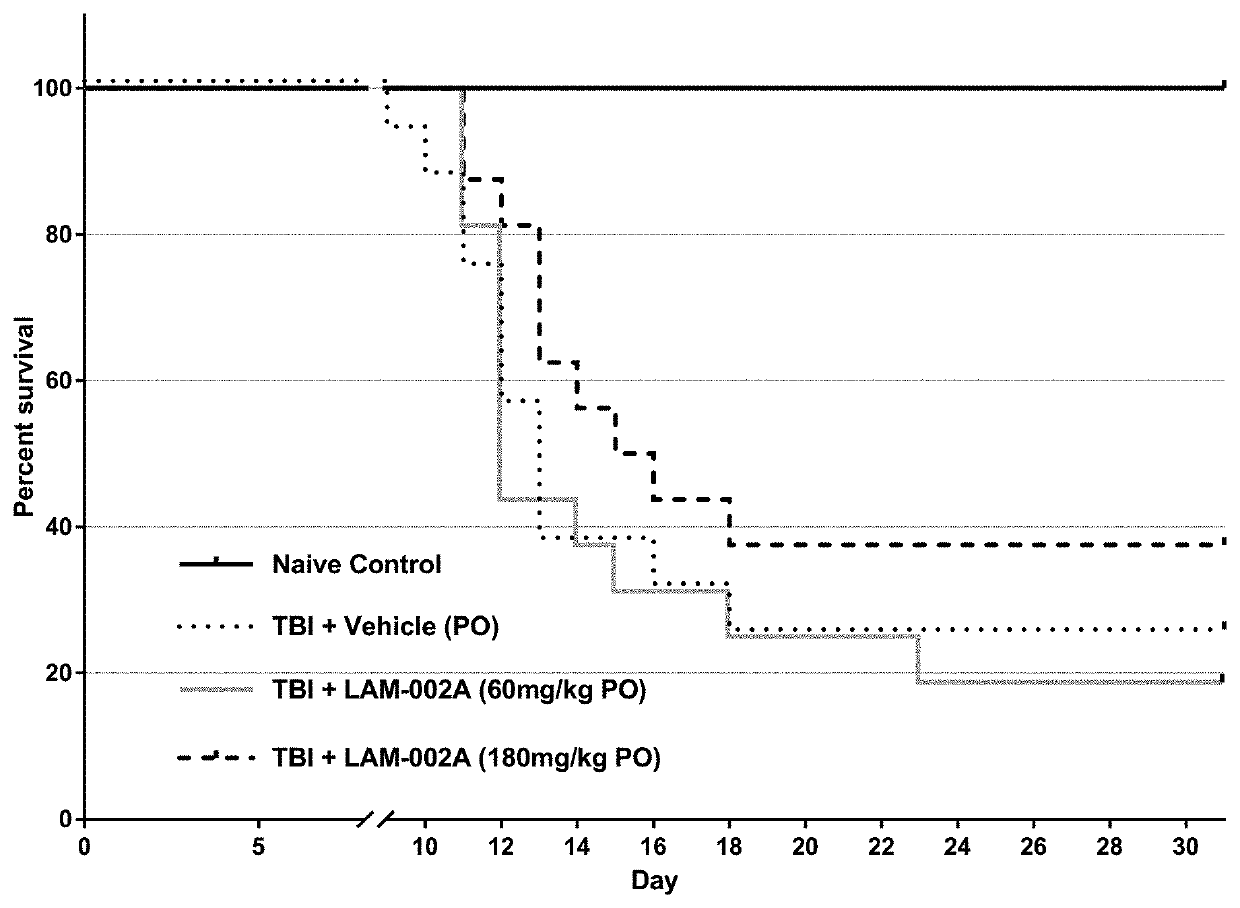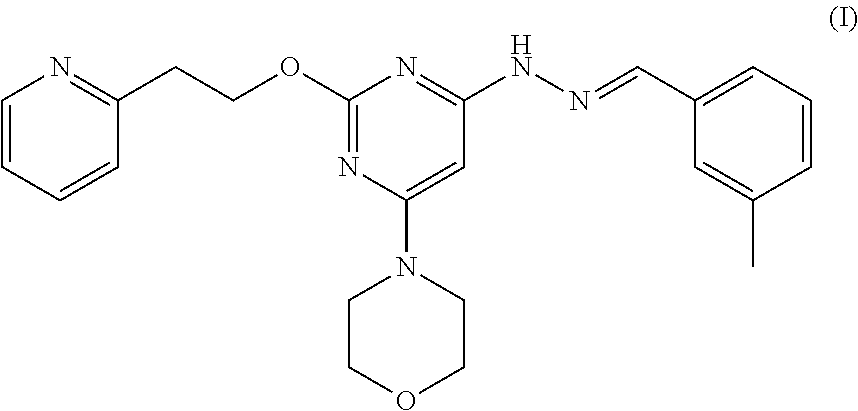Compositions and methods relating to the radioprotective effects of apilimod
a technology of apilimod and adipose, which is applied in the field of apilimod, can solve the problems of immune cells being vulnerable to radiation, exposing subjects particularly vulnerable to active infections, and reducing the effect of granulocytes and natural killer cells
- Summary
- Abstract
- Description
- Claims
- Application Information
AI Technical Summary
Problems solved by technology
Method used
Image
Examples
example 1
Prevention of Radiation-Induced Mortality and Weight Loss in Mice
[0069]Eighty-six (86) C57B1 / 6 male mice were randomized into 6 groups. Group 1 (n=6) served as the untreated control group (no apilimod dimesylate or radiation). Animals in Groups 2-6 (n=16 / group) were exposed to an 8.5 Gy dose of total body irradiation on Day 0. Radiation was generated with a 160 kilovolt potential (18-ma) source at a focal distance of 25 cm, hardened with a 0.35 mm A1 filtration system. Irradiation targeted the total body at a rate of approximately 1.0 Gy / minute. The total radiation dose and dose rate was measured in real time with a Farmer-type ionization chamber and a Fluke 35040 ATD dosimeter. No anesthesia was used during irradiation. Animals were monitored for survival twice daily and those that lost greater than 30% of their total starting body weight were euthanized. Animals in Groups 2 through 6 were dosed with apilimod dimesylate or vehicle exactly 3 hrs prior to radiation on Day 0 via oral ...
PUM
| Property | Measurement | Unit |
|---|---|---|
| focal distance | aaaaa | aaaaa |
| focal distance | aaaaa | aaaaa |
| time | aaaaa | aaaaa |
Abstract
Description
Claims
Application Information
 Login to View More
Login to View More - R&D
- Intellectual Property
- Life Sciences
- Materials
- Tech Scout
- Unparalleled Data Quality
- Higher Quality Content
- 60% Fewer Hallucinations
Browse by: Latest US Patents, China's latest patents, Technical Efficacy Thesaurus, Application Domain, Technology Topic, Popular Technical Reports.
© 2025 PatSnap. All rights reserved.Legal|Privacy policy|Modern Slavery Act Transparency Statement|Sitemap|About US| Contact US: help@patsnap.com


